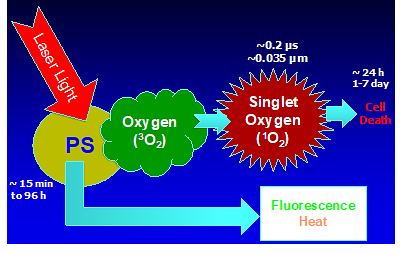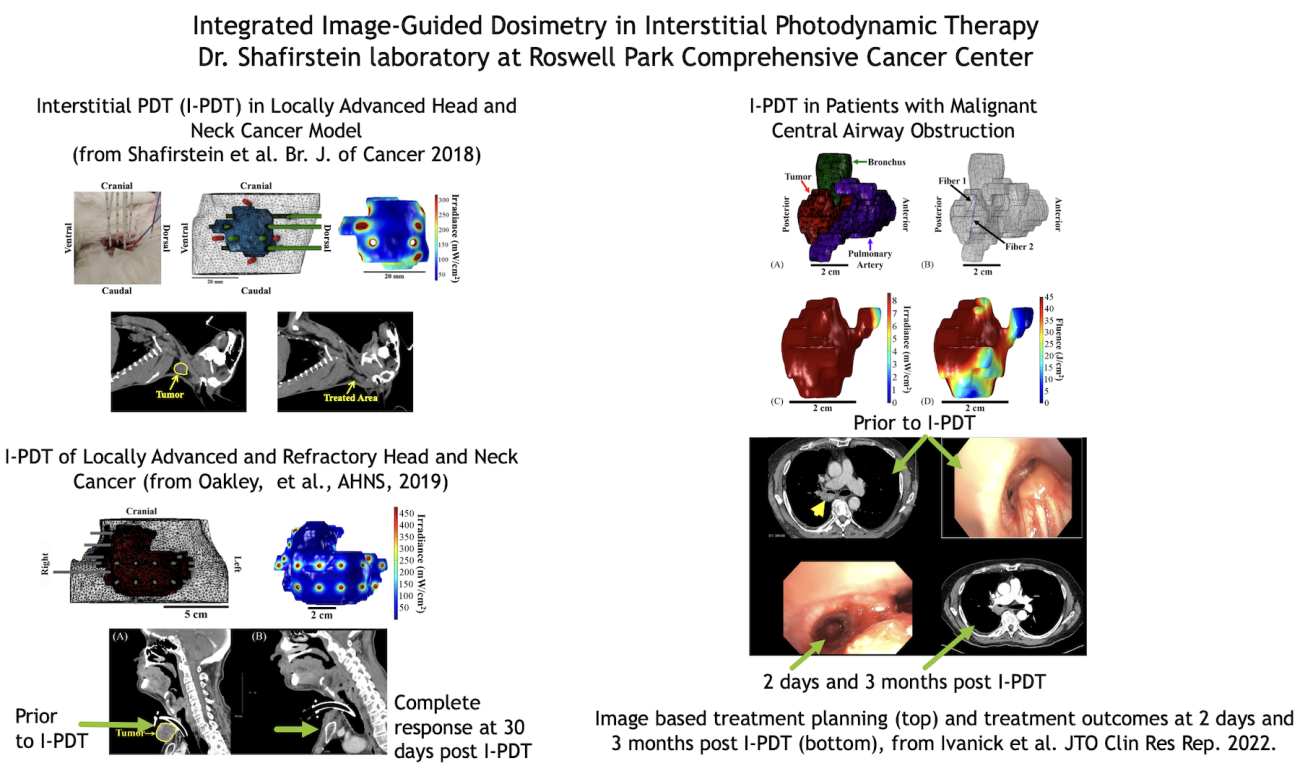Photodynamic Therapy
Research in the Shafirstein Lab focuses on photodynamic therapy (PDT). This treatment was developed into an approved clinical therapy at Roswell Park about 40 years ago by the late Dr. Thomas Dougherty.
The image below is a simple schema that demonstrates how PDT works. It’s a two-step process that begins with an application of a light-sensitive drug that is activated with an external laser light to produce reactive oxygen species (mainly singlet oxygen) to ablate cancerous tumors.
The treatment starts by applying a light-sensitive drug (a photosensitizer, or PS). A waiting time of 15 minutes or up to 96 hours is used to obtain preferential retention or accumulation of the PS in the target tumor.
Laser light is used to activate the PS that, in the presence of oxygen, produces reactive oxygen species or singlet oxygen (primarily in the clinically approved PS). The singlet oxygen causes tissue damage within microseconds (~0.2 µs).
The activated PS emits fluorescent light that can be used for diagnostic purposes. Heat can be generated when the light is delivered interstitially. The PDT process continues while the light is on. Cell and tumor death occurs immediately and continuously over 24 hours and can last up to seven days with immune response.
The PDT is limited to where there is light, PS and oxygen, and no more than a fraction of a micrometer (~0.035 µm) of tissue is affected outside this zone.
Exploring Interstitial Photodynamic Therapy
Interstitial PDT (I-PDT) is a treatment approach where laser fibers are inserted into the target tumor to activate the PS. The I-PDT is required to treat tumors that are larger than 5-10 mm, or a depth of ≥5 mm.
Our research specifically focuses on developing image-based treatment planning and light dosimetry that allows for treatment of large and inoperable cancerous tumors in patients who have no other effective treatments. These include locally advanced or refractory lung, head and neck, liver, colorectal and breast cancer.
Our team is a leader in light dosimetry and image-based treatment planning for I-PDT that results in the development of clinical trials. To that end:
- We closely collaborate with physicians who treat locally advanced and locoregional head and neck and lung cancer.
- We jointly develop the clinical protocols and are involved in the treatment planning.
- We are in the operating rooms providing real-time engineering support for our novel technologies.
Contact the Shafirstein Lab
Email: Gal.Shafirstein@RoswellPark.org
Phone: 716-845-4025
Department of Cell Stress Biology
Roswell Park Comprehensive Cancer Center
Elm and Carlton Streets
Buffalo, NY 14263

